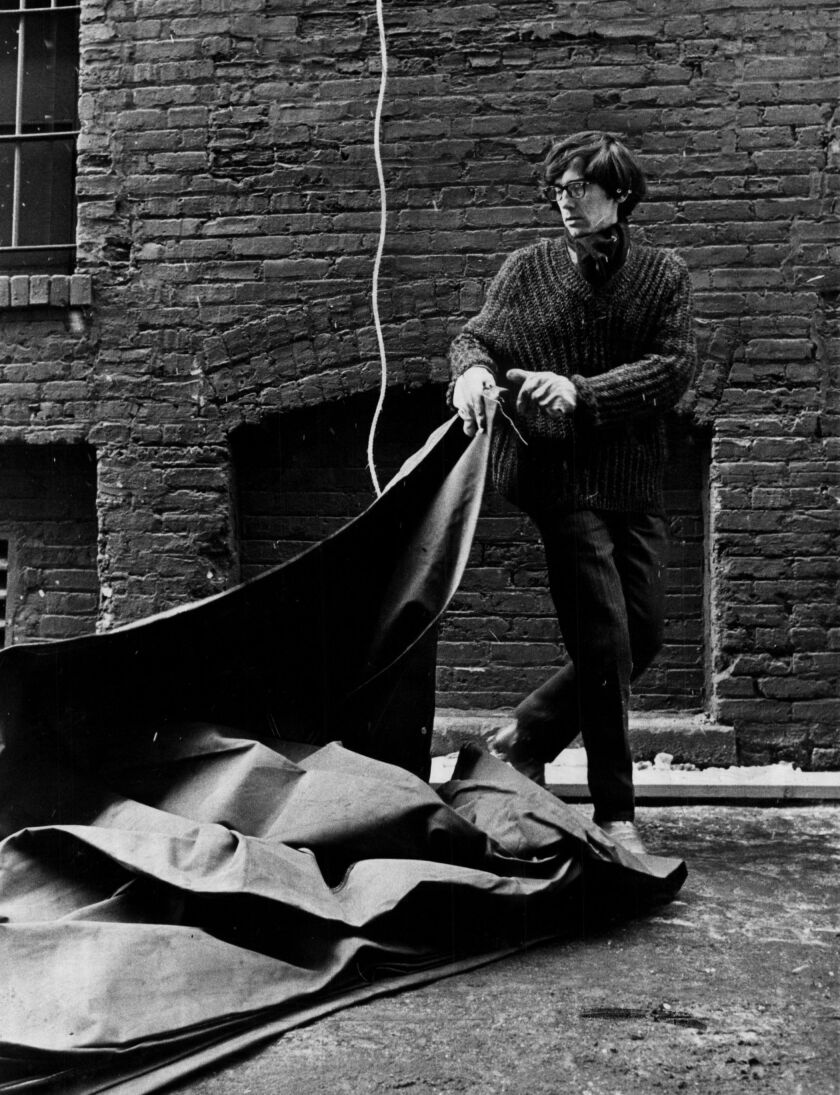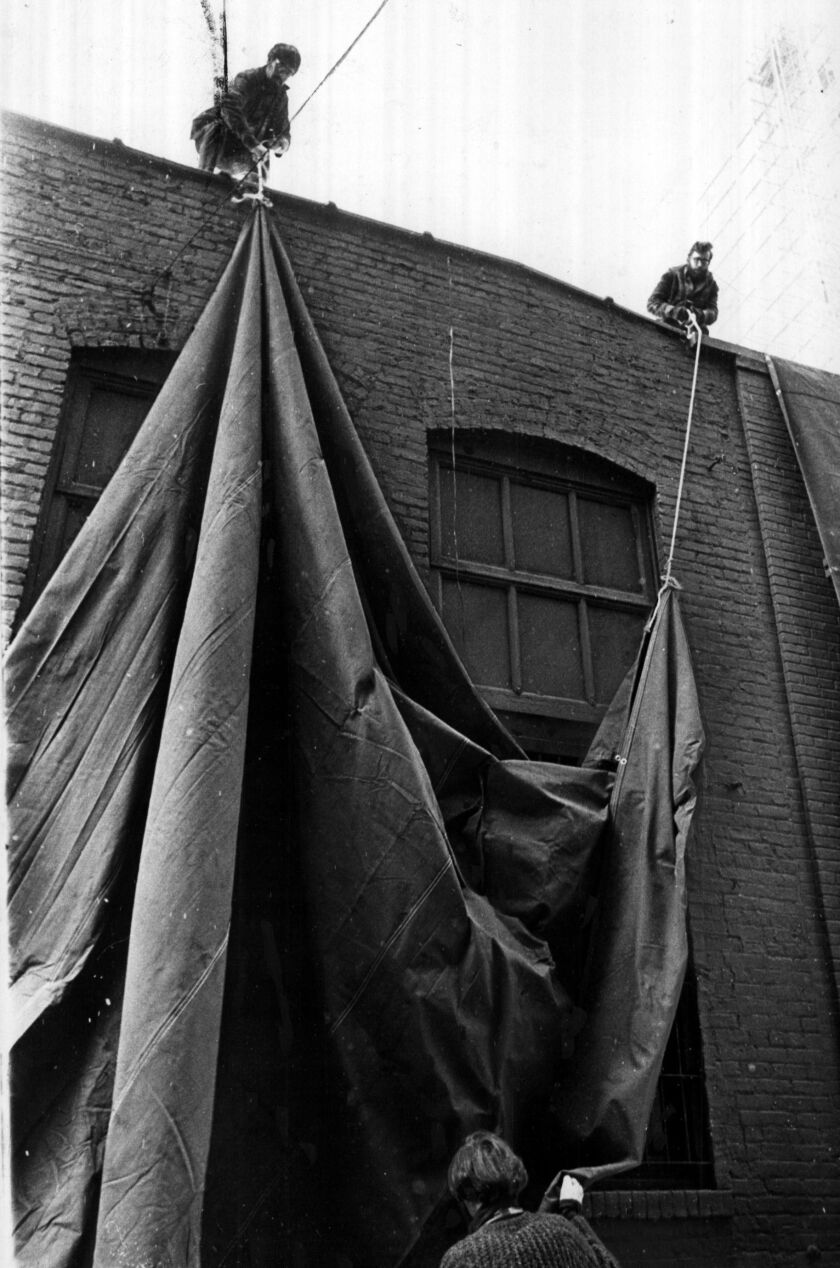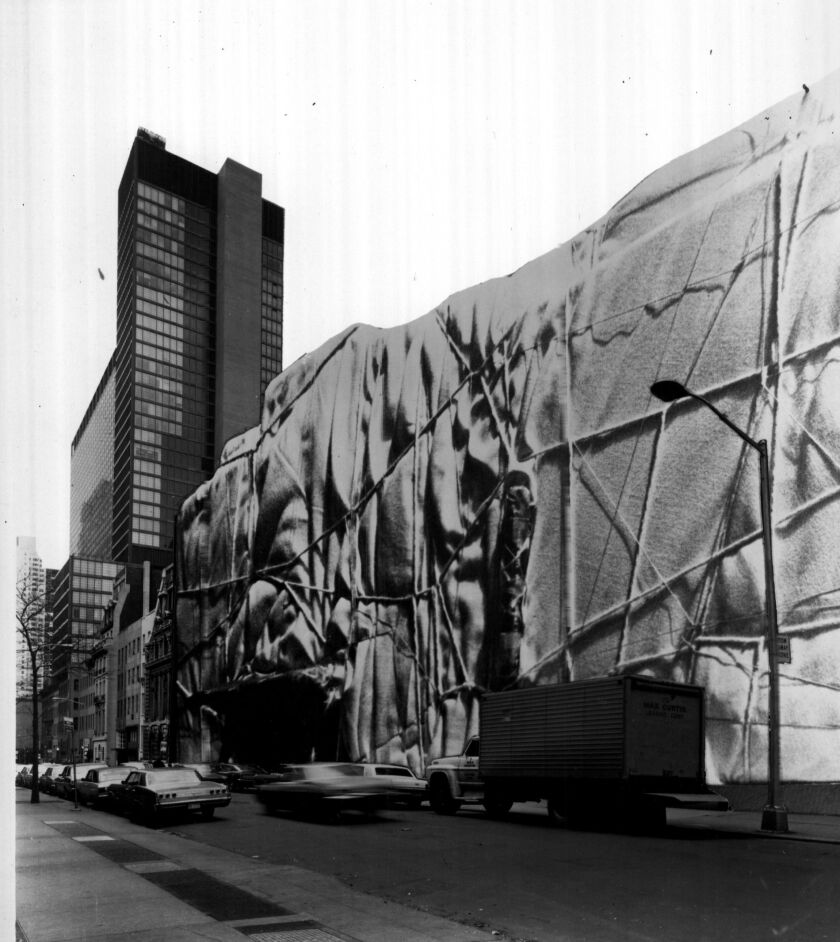Artist Christo, who died Sunday, was fond of wrapping the unwrappable, in large-scale installations all around the world. The first U.S. building he wrapped was Chicago’s Museum of Contemporary Art, and he explained the plan in a Jan. 8, 1969, article by the Sun-Times’ Jack Altman. This reprint includes photos of the wrapping project the following week.
There’s a Bulgarian coming to town and he’s going to wrap up our Museum of Contemporary Art. Yes, literally wrap it up.
It’ll take 11,000 square feet of tarpaulin and more than 10,000 feet of manila rope to make the package. Work starts next Monday, and should be finished the following Friday.
The packaged museum will be the major piece in an exhibition of this Bulgarian’s work. He’s called Christo — he doesn’t use his family name of Javacheff — and making packages is his life’s work.
He’ll wrap up anything. Ten years ago it was just bottles, then he moved on to motorcycles, autos, nude girls. This year he started on buildings, wrapping up the art museum in Berne, Switzerland, and a church facade in Spoleto, Italy. For good measure he also commandeered 193,000 cubic feet of air in Kassel, West Germany, and floated it in a package over the international Documenta exhibition.
The Museum of Contemporary Art, at 237 E. Ontario, will be Christo’s first American building to be wrapped up. He had intended to package the Museum of Modern Art in New York, but the fire department said no.
But New York, where Christo has lived since 1964, has not seen the last of the great Bulgarian wrapper. He is currently negotiating to package a complete skyscraper, identity undivulged — under wraps, so to speak.
Why, you ask, why? First of all, a package is a mystery. What’s inside? Is it really the same shape as the package?
“My work,” says Christo, “is not a make-belief. The packages are packages, I’m not making something that looks like something else. I believe in the physicality of reality. That is what my packages focus on.”
Christo is very happy with the prospect of wrapping our museum. “It’s perfect,” he says. “In the first place, it looks like a package already, very anonymous. Its facade is a fake wall, covering the original structure.”
Functionally, too, the museum is a package already, presenting works of art in a “suitable” setting. Wrapping it up will merely emphasize this.
Christo has already noted the reactions of people to his packaged buildings. “Most people find it very disturbing,” he says. “It makes them nervous, the mystery of it. A few see it as a work of art, some think the museum is closed for repairs, and others will inevitably think of it as a put-on.”
A major art collector in Antwerp, Belgium, is one who takes Christo seriously. He has commissioned the artist to wrap up his house, permanently. The house will remain packaged, a work of art in itself. it will not be unwrapped. If the collector were ever to want to sell the house, he would sell it like any of the sculpture or paintings in his collection, a work of art by Christo. Ideally, Christo would like to see our museum permanently wrapped.
The technique of wrapping the building, using 35 pieces of tarpaulin, 20 feet by 20 feet square, is of no special interest to him, though he admits other people are intrigued by the proces. The suggestion that the ultimate unwrapping of the museum might be seen by some as a mammoth striptease did not impress him. “It’s exciting, of course, to see Van Gogh paint a picture. For me, what counts is the picture. I’m more interested in the wrapped object than in the action of wrapping.”








